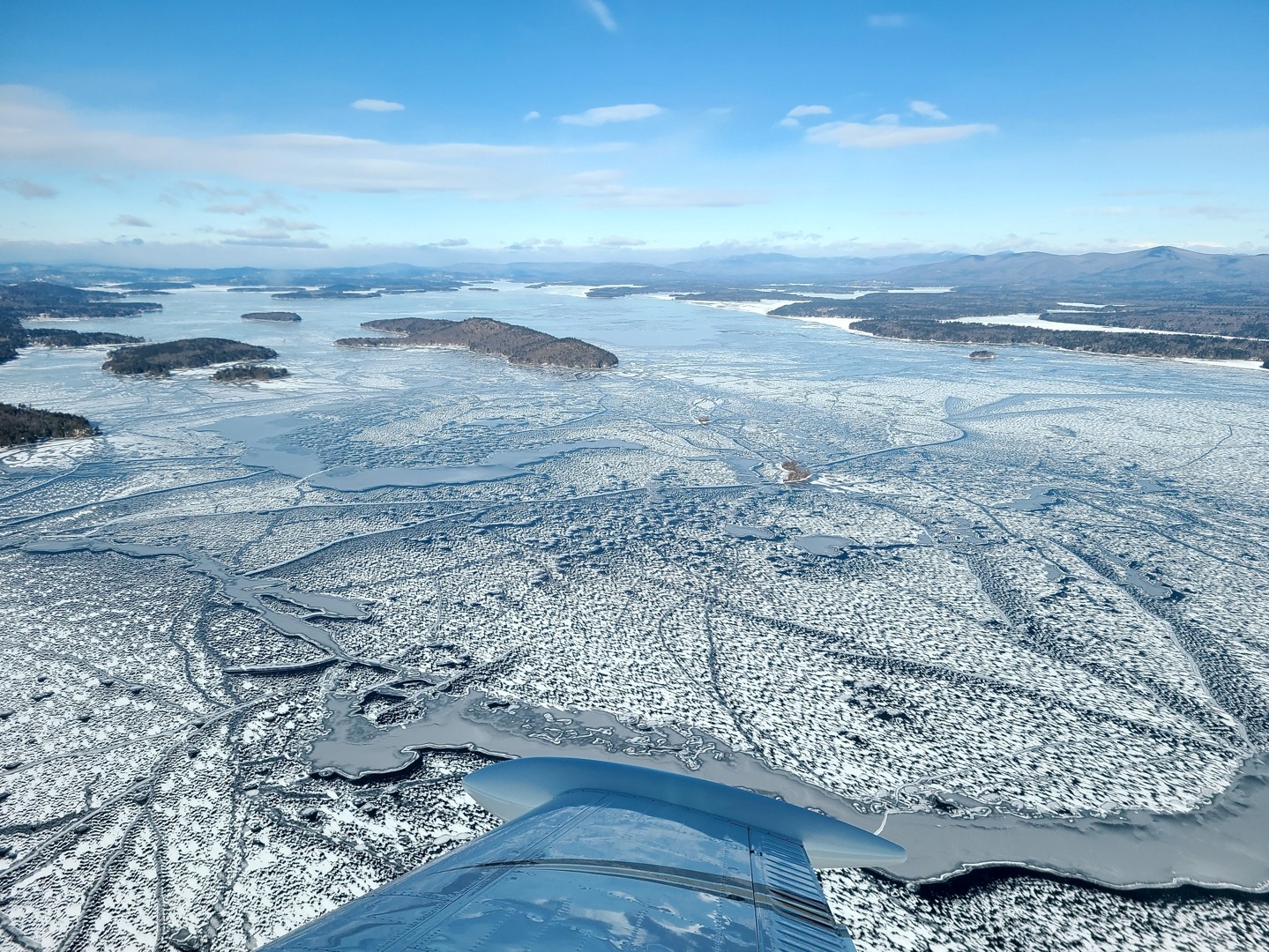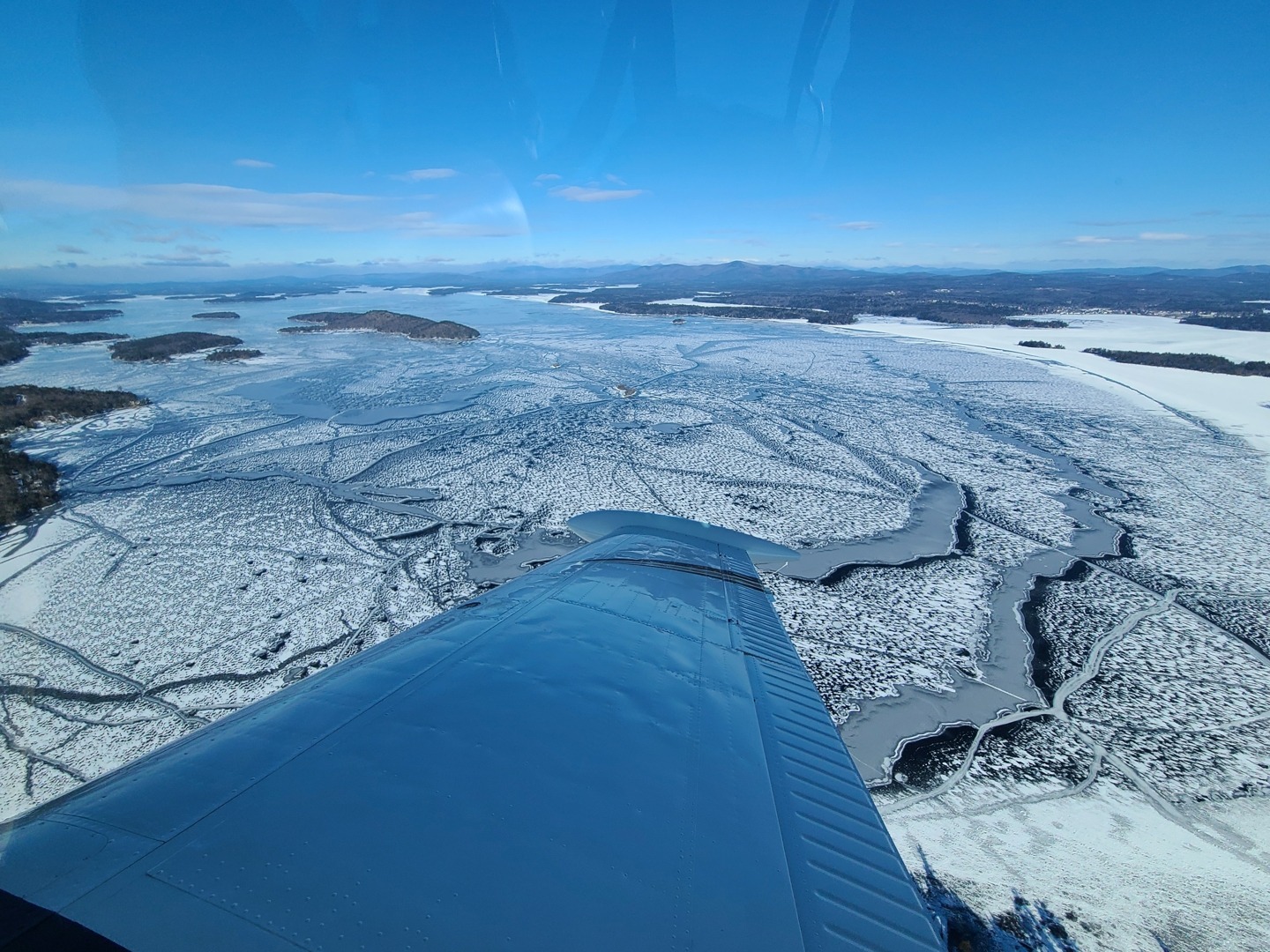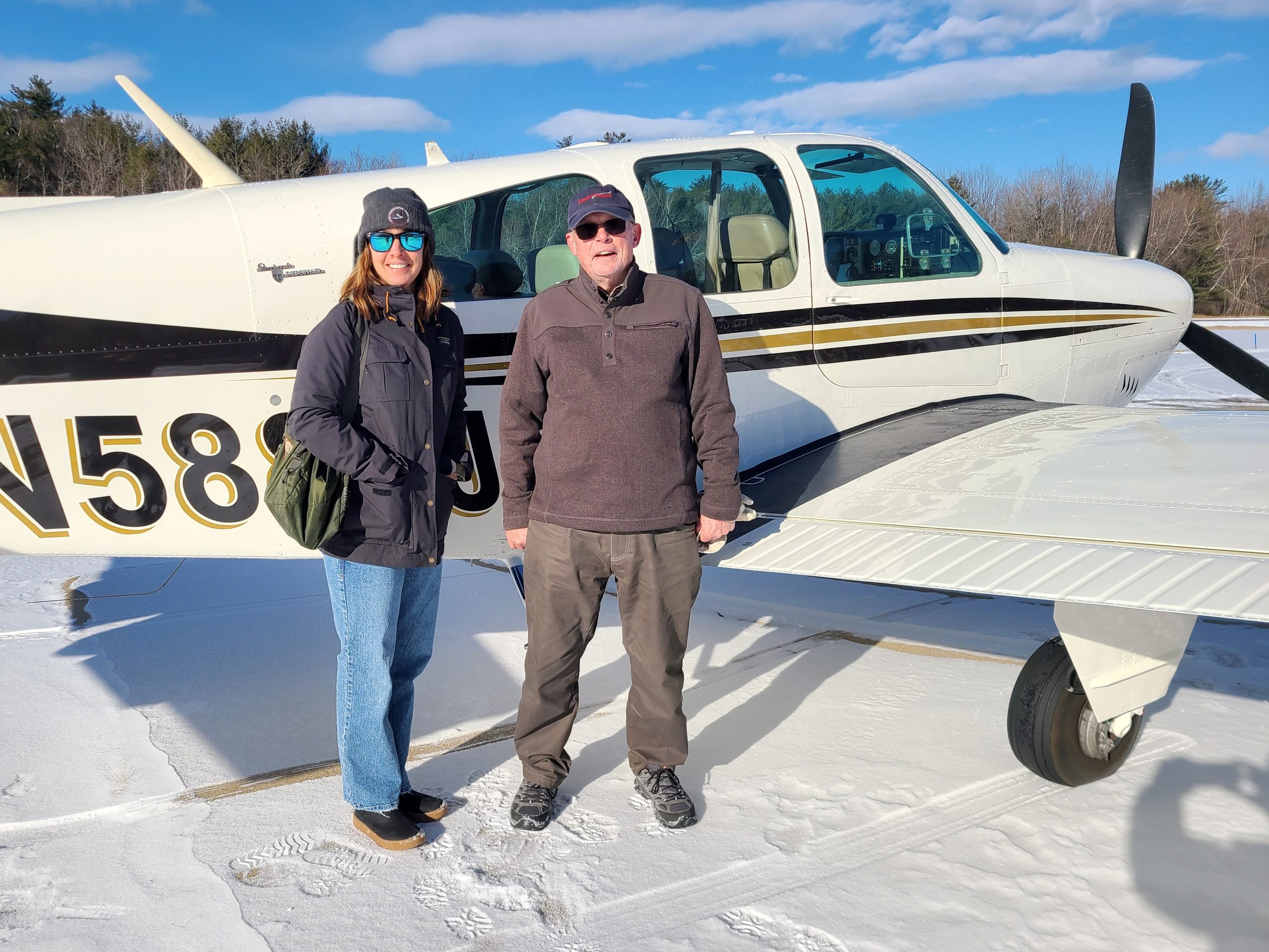
Lake Winnipesaukee underwent an early and rapid freeze this winter. Conservationists were concerned that loons who call the lake home in warmer months were stranded in the frozen lake. Fortunately, no stranded birds were seen, indicating they had already migrated to warmer waters. Photo by Harry Vogel.
The Issue
Loons are built for water, not land. Their legs sit so far back on their bodies that walking is nearly impossible. To migrate south each winter, loons need a long stretch of open water to take off. When lakes freeze early, they can become trapped and unable to reach the open water they need to survive.
That’s where our partners at the Loon Preservation Committee come in. With help from LightHawk volunteer pilot Mike McNamara, they took to the sky over Lake Winnipesaukee to search for stranded loons.
The Flight
Mike flies a Beechcraft Debonair based out of Pottstown, Pennsylvania. For this mission, he traveled to a small, snow-covered airport near the lake. The runway was windswept and quiet, with only a locked building onsite. Fortunately, Mike was familiar with the area, including Alton Bay, which transforms into a plowed ice runway in the winter months.
When the Loon Preservation Committee team arrived, Mike briefed them on what to expect. Snow and cold temperatures were in the forecast, so he warned of possible turbulence. The team had a few concerns—mainly about whether they could cover enough ground and stay warm during the flight. Mike assured them his plane was fast enough to efficiently survey the lake at a slower speed and that the engine put out plenty of heat to keep the cabin comfortable.
He also gave a few photography tips: set the camera focus to infinity and avoid pressing the lens against the window, since vibrations can cause image blur.
Mike initially planned to fly at 1,000 feet, but bumpy air led him to climb to 1,600 feet, where conditions were smoother. From above, the team could see areas that are difficult or impossible to access from the ground. While parts of the lake are visible from public access points, much of the shoreline is private and hidden from view. That’s why this flight was so valuable.
Most of the lake had already frozen, earlier than expected. That raised concern that loons may have been caught before they could migrate.

Pilot Mike McNamara had both passengers sit on the right side of the plane, then made all of his turns to the right, allowing them unobstructed views of the lake despite being in a low-wing aircraft. Photos by Harry Vogel.
Flight Details and Reflections
Mike typically cruises faster, but for this mission he held his speed at around 100 knots—well above the 70-knot landing speed, but ideal for safe and steady aerial observation.
To provide optimal views, he had both passengers sit on the right side of the plane. He then made a series of right-hand turns around the lake, giving them clear lines of sight for their search. Despite the Debonair being a low-wing aircraft, it performed well for this kind of survey work.
On the return, a strong crosswind meant the plane wasn’t pointed directly at the runway. This crabbing technique into the wind made the passengers nervous at first, but Mike calmly explained that things would smooth out on final approach and that, despite appearances, they were aligned for a safe landing.
The flight lasted about 30 minutes and included several passes over Lake Winnipesaukee and a nearby smaller lake. The team took many photos for further review.
While no loons were spotted, the absence of birds was good news. It suggested that the loons had managed to migrate before the lake froze over. If stranded birds had been found, it would have triggered a difficult and risky ice rescue effort. Instead, volunteers could focus resources elsewhere, confident that the early freeze had not trapped any birds.
Mike shared that one of the things he enjoys most about flying for LightHawk is learning about new conservation challenges. He gained a new appreciation for loons during this mission and was inspired to learn that both of his passengers work full-time on loon conservation. Before leaving, he promised to visit them at their base this summer.
Thank you to volunteer pilot Mike McNamara for making this mission possible and for sharing your reflections. Just as Mike enjoys learning from our partners, we are always grateful to hear from the pilots who help bring LightHawk’s conservation missions to life.

Volunteer pilot Mike McNamara and a passenger from the Loon Preservation Committee standing next to Mike’s Beechcraft Debonair. Photo by Harry Vogel.
